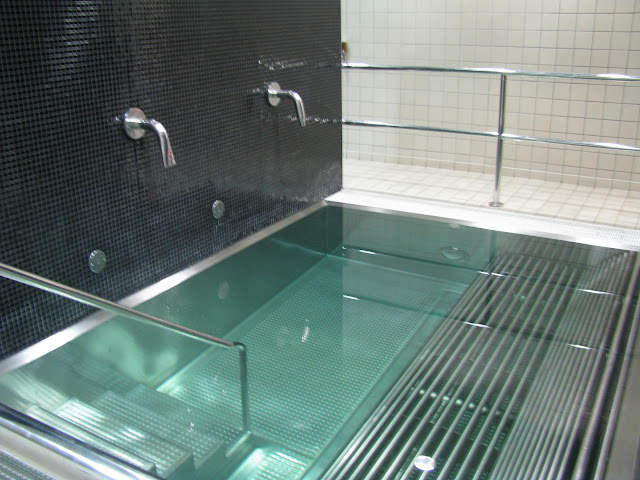Quite literally around the corner from Highbury lies the altogether different venue of the Emirates, the glittering crown of Arsenal's modern era, an impressive sight approached from any direction. The cannons are a nice touch, whilst the huge posters hammer home the message of the club's motto - Victoria Concordia Crescit - 'victory comes from harmony'. Picking my way through the fans and onlookers, I circumnavigate the stadium, pass the Tony Adams statue, and enter the club's museum - something of a rite of passage for Arsenal pilgrims - which tells the story of the club, from its industrial beginnings in southeast London (where it was described as "Hell on Earth" by visiting players), to its relocation to the north of the capital (at the extreme annoyance of Tottenham Hotspur), the players, managers and titles that have defined it as one of the most successful clubs of the modern era. Alf Kirchen's 1936 FA Cup Final shirt is here, as is the club's first white-sleeved shirt (dated 1933 and signed by Herbert Chapman), and the boots with which Michael Thomas won the 1989 league championship at Liverpool. Above all, though, comes the message of Arsenal - self-sustainability, responsibility, charity - the traits of the club's history, alive and well in the present. Here they do things the right way. In these parts, they call it the Arsenal way.
Museum thoroughly explored, I enter the Emirates for the obligatory stadium tour. A must for Gunners fans, this is also a great trip for anyone with an interest in football. The tour takes you through the stadium's service yard underneath the ground, and up into the directors' lounge and the exclusive Diamond Club, decked out in the Art Deco style to mimic Highbury Stadium - indeed the Diamond Club's clock is an exact half-size replica of Highbury's, in another homage to the tradition of the club. The view from here is unsurpassed, and one can only imagine the matchday atmosphere, the roar of 60,000 spectators. Inside the directors' lounge, flowers are arranged and changed each match, to reflect the colours of Arsenal's opponents - roses for Liverpool, lilies for Tottenham, flowers are even died black for the visit of Newcastle United in another tradition dating back to the early Arsenal days.
Taking the lift back downstairs brings me to the players' entrance. The photos on the wall remind me of some of Arsenal's most memorable moments - Tony Adams scoring against Everton in the 1998 title-clincher, the final match at Highbury, Dennis Bergkamp's testimonial - whilst the back wall is emblazoned with the Arsenal crest, and once again exudes the Arsenal message - the deeper the foundations, the stronger the fortress. Down the
corridor, the home dressing room lacks equipment (it is
the close-season afterall), but the squad's shirts have been hung out in a
row for our benefit. There's also a physio room and a team bath, although it surely
isn't large enough for the first eleven.
Out of the dressing room and down the tunnel for the most exciting part of the tour, following in the footsteps of Arsenal legends before me. The light at the end of the tunnel is the pitch itself, and although we're not allowed on it, visitors may sit in the home dugout and enjoy the stadium view from pitch-level. The stadium is, as expected, stunning, deliberately shaped so that the pitch benefits from good light and rain conditions. No mudbaths here - Arsenal frequently win the pitch of the year awards.
The tour concludes in the media centre - three interview booths are followed by the press conference room, which seats around 150 journalists, each hungry for the opinion of the chairman, manager or captain. This is where many stories break - the hirings, firings and transfers that make football one of the most dynamic and constantly-changing sports in the world.
Leaving the Emirates, I go in search of Holloway Road tube station, my route back to familiar central London. I've enjoyed the tour, but more importantly I think I've gained a better understanding of what Arsenal Football Club is, and what it represents to the world. Arsenal is more than a team competing for trophies - it is a community, deeply rooted in its history and traditions, mindful of its past in every step of its future, and always holding true to the Arsenal Way - community, family, loyalty, togetherness, Victoria Concordia Crescit.
















